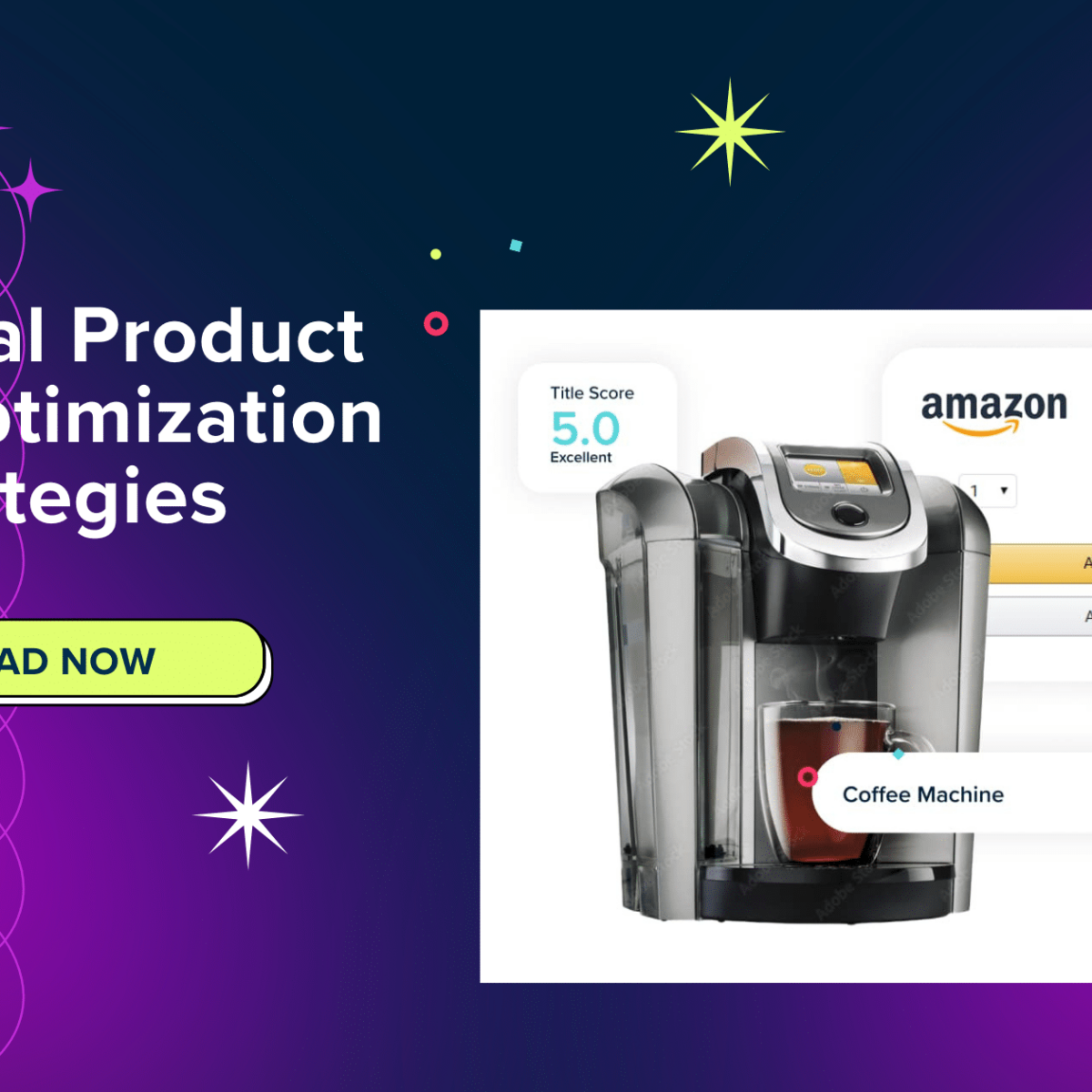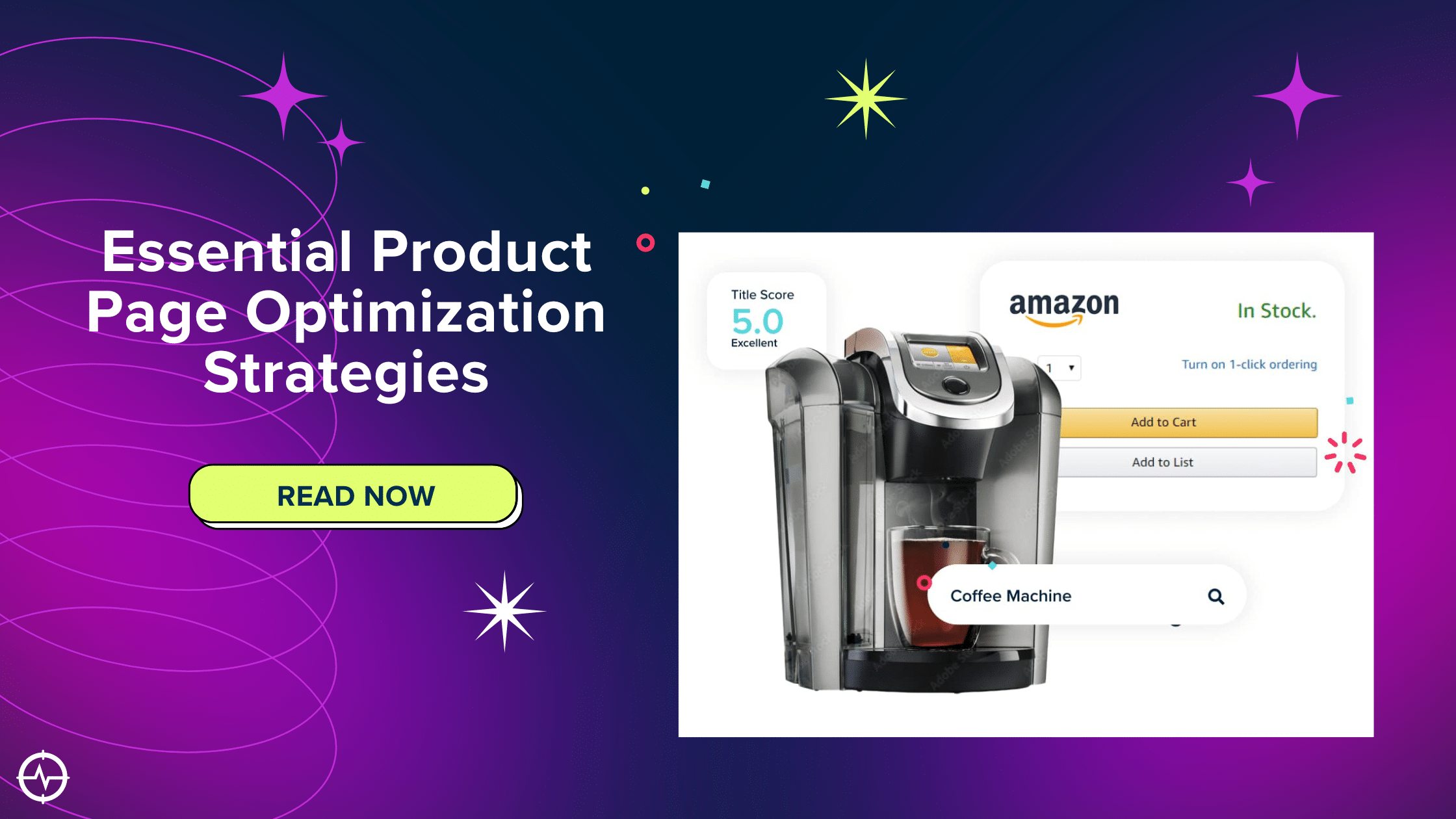Essential Product Page Optimization Strategies to Boost Your Ecommerce Success
Mastering Product Page Optimization Strategies
Ever taken a guided historical tour? Sure, sometimes the costumes can be a bit much. But the narrative often captivates, offering not just information but also entertainment—providing added value, helpful insights, and perhaps even a few unexpected delights along the way.
When it comes to product page optimization strategies, brands should strive to create a similarly engaging experience for their shoppers. A well-optimized product page doesn’t just ensure customers find what they’re looking for (the bare minimum), but also builds trust, encourages future purchases, and adds a touch of memorable fun to the shopping process.
Here, we’ll dive into core product page optimization strategies and explore what works—and what doesn’t—when it comes to making your brand stand out on the digital shelf.
Why Is Product Page Optimization So Important?
When shopping in person, a customer may be less inclined to spend hours visiting different stores to compare options. Online, however? In the crowded digital marketplace, where other storefronts are just a click away, capturing and maintaining consumer attention is a brand’s top priority.
Optimizing your product pages isn’t just about improving visuals or adjusting the layout. Instead, think of it as a strategy to ensure that every visitor to your product page embarks on a seamless, engaging, and informative journey from arrival to checkout. Effective product page optimization strategies anticipate customer questions or concerns, demonstrate how your products solve their problems, and guide them toward making a purchase (and returning for more).
It’s crucial to keep a close eye on every page element—from images to descriptions to customer reviews—and ensure they’re all working together to convert and retain customers.
Guiding Principles of Effective Product Page Optimization Strategies
Here are some fundamental principles to keep in mind when optimizing your ecommerce product pages. These strategies are critical not only for attracting attention but also for building trust and maintaining engagement throughout your product pages.
Clarity Is King
Always use clear, straightforward language to ensure that product features, benefits, and prices are easily understood.
Remember: Customers visit your product pages looking for confirmation that your product can address their problems, pain points, or specific use cases. If your products can do that, make sure it’s as clear as possible to the shopper.
Consistency Builds Trust
Consistency, especially across channels, is essential. Your product pages should maintain a uniform tone, style, layout, and quality across all platforms. Customers will feel more confident in your brand’s reliability and professionalism if they encounter consistent messaging and presentation wherever they interact with it. It’s essential to regularly audit and monitor the consistency of your marketing copy, visuals, and enhanced content on every product page to protect your brand. Learn how.
Inspirational Engagement
Don’t overlook the “wow” factor. Elements that inspire and engage not only add a touch of fun as customers explore your product pages, but they also increase the likelihood of purchase and foster repeat business. Check out our comprehensive guide to creating a product page that converts.
Best Practices for Implementing Product Page Optimization Strategies
So, how can brands effectively apply these strategies in the real world? Here are some best (and not-so-best) practices that demonstrate how clarity, consistency, and engagement can transform your product pages.
Fix: Low-Quality, Low-Value Images
When shopping online, customers can’t hold your product in their hand or see it in action. That’s why your product pages can’t afford to feature blurry, poorly lit, or misleading photos that fail to convey the value of your offerings.
Beyond the immediate impact, these types of images can erode customer trust in your brand over time. Don’t let this happen to you.
With  High-Quality, High-Value Images
High-Quality, High-Value Images
Instead, focus on providing high-quality images and videos that showcase your products from multiple angles and in different settings. Lifestyle photos, 360-degree shots, infographics, and comparison charts can all help customers visualize how your products can be used, guiding them smoothly toward a purchase.
Enhanced videos, such as how-to guides or feature demonstrations, can also go the extra mile in providing shoppers with a deeper understanding of your offerings.
Fix: Missing or Incomplete Information
Customers won’t buy your products if you fail to show how they meet their specific needs or, even worse, if you leave out essential features entirely.
Missing details can create a significant barrier to customer satisfaction and sales. When product pages omit critical information like dimensions, materials, or specific features, customers may hesitate or look elsewhere before making a purchase.
With  Extremely Detailed Descriptions
Extremely Detailed Descriptions
To achieve better results, provide detailed, clear descriptions that communicate the value, functionality, and available options for each product. Incorporate user-generated content (UGC) like multimedia or customer reviews to offer additional social proof and reassure your customers.
If your product offers a particularly strong deal compared to competitors, consider providing shoppers with a side-by-side comparison of pricing, features, and more. Think like your customers: anticipate the questions they’ll be asking and provide thorough answers.
Fix: Inconsistent Experiences or Information Across Channels
While detailed product descriptions are crucial, they can sometimes lead to inconsistencies, especially when managing multiple product pages across various channels. This can confuse customers at best or drive them to more reliable competitors at worst.
Ensure that your product inventory management tool consistently populates your product pages with accurate and uniform information.
With  Memorable Storytelling
Memorable Storytelling
Your descriptions don’t have to be a dry recitation of your product’s features. Product pages are a prime opportunity to reinforce your brand’s vision and mission with your audience.
Creative, informative, and persuasive narratives that tell the story behind a product or brand, or how a customer might fit into your brand’s community, can turn “the small print” into something memorable for shoppers.
Give Shoppers What They Want
Your product pages are arguably the most powerful tool in your marketing arsenal. By embracing clarity, consistency, and engagement, brands can transform their product pages from simple catalog entries into compelling stories that inform, delight, and convert visitors into loyal customers.
Provide your customers with the information they need to trust you, and they’ll keep coming back, time and again. Implement these product page optimization strategies to elevate your ecommerce presence and drive results.
If your team needs immediate visibility into whether or not your portfolio’s PDP content is compliant and high-quality, get in touch. Our experts will show you 3-4 things you can improve right away.
Love reading, keep reading
Get the latest articles delivered directly to your inbox!


